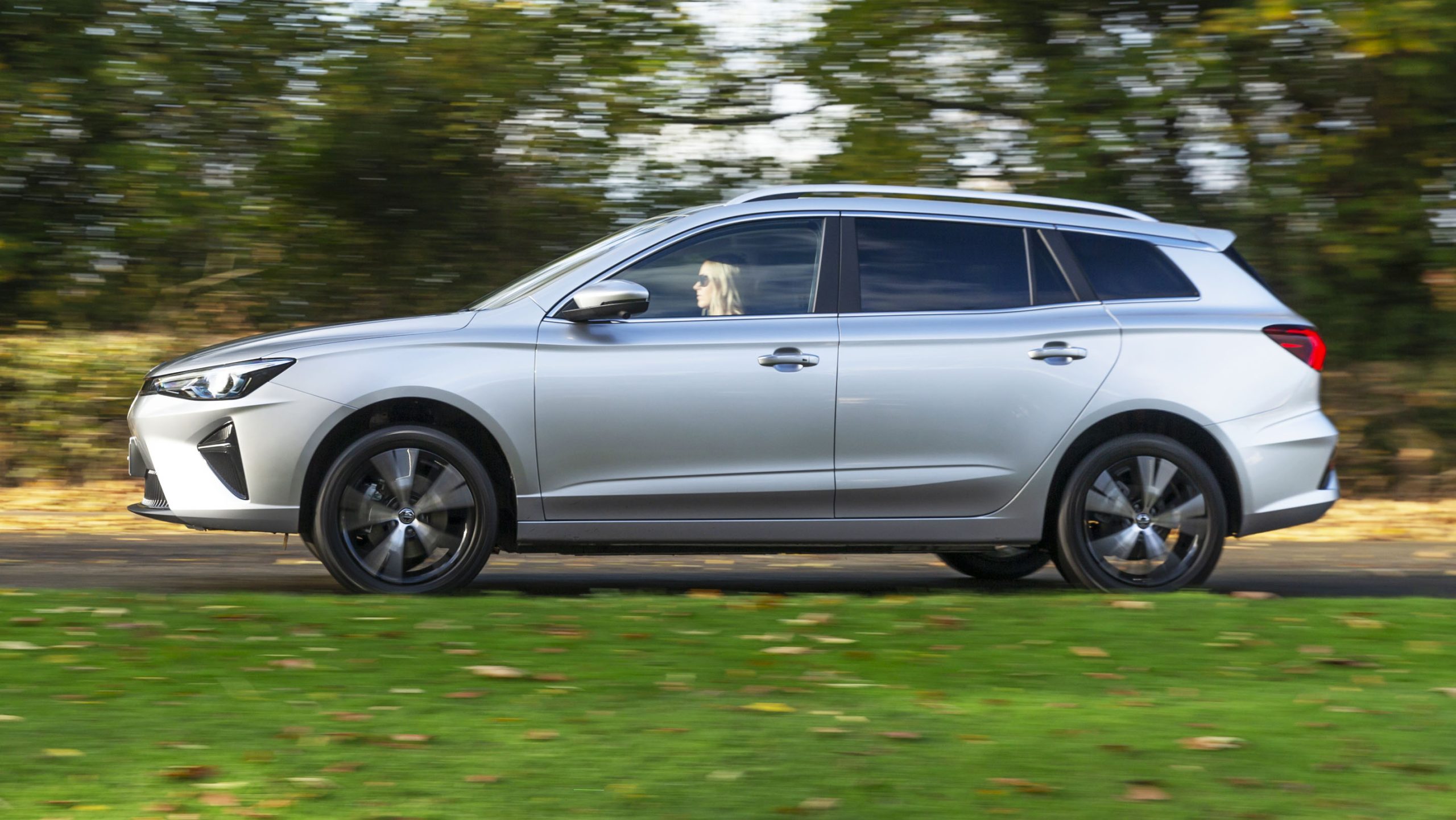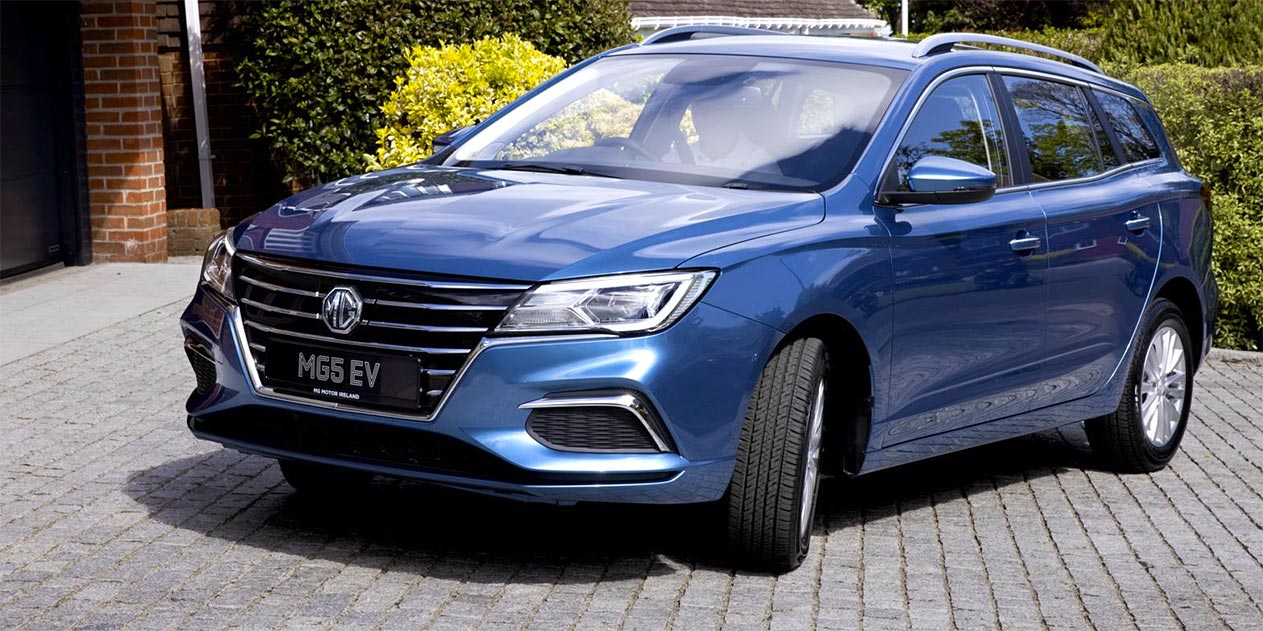
How to charge Tesla Model 3 from a home outlet in Ukraine?
x risks, make sure that the wiring in your home meets the requirements for safe charging. If you are unsure of the condition of your electrical network, it is best to consult an electrician and, if necessary, update the wiring or add protective devices such as circuit breakers to prevent overloading the system. How do I connect my Tesla to a power outlet? The process of plugging a Tesla into a wall outlet seems simple, [...]
Content:
x risks, make sure that the wiring in your home meets the requirements for safe charging. If you are unsure of the condition of your electrical network, it is best to consult an electrician and, if necessary, update the wiring or add protective devices such as circuit breakers to prevent overloading the system.
How to connect a Tesla to a power outlet?
The process of plugging your Tesla into a wall outlet seems simple, but there are a few important aspects to consider. When you buy a Tesla, it usually comes with a basic charging cable called the Mobile Connector. This cable is specifically designed for charging from a regular wall outlet, but there are some nuances to consider.
Interchangeable adapters for different socket types
The Mobile Connector has interchangeable adapters or "tails" that fit different types of sockets. This is useful because different countries use different standards for electrical outlets. For example, if your Tesla was imported from the United States, you may have trouble connecting it to European outlets due to the difference in standards. In this case, you will need an adapter for European outlets, which can be purchased for about $50 from specialised stores or electric vehicle accessory manufacturers.
These adapters are easy to change and allow you to connect your Tesla to any outlet, making the charging process more versatile. However, before purchasing an adapter, make sure that it is suitable for your type of power outlet to avoid any problems during charging.

Adapter from red to blue socket
For Tesla owners who use red power outlets (often common in Europe), adapters are available to allow connection to a blue outlet. This can be useful when only blue power outlets (16A or 32A) are available, as they usually provide a consistent power supply for charging.
These adapters are easy to change and allow you to connect your Tesla to any outlet, making the charging process more versatile. However, before purchasing an adapter, make sure that it is suitable for your type of power outlet to avoid any problems during charging.
Check grounding before charging
One of the most important aspects of safely charging a Tesla from a home outlet is the presence of a ground connection. Grounding ensures safety for both the vehicle and the user, as an electric vehicle can build up static electricity while charging. Without proper grounding, this can lead to electrical shocks when touching the vehicle.
Before you start charging your Tesla, check that your outlet is earthed. If it is not, it is best to refrain from using this outlet to charge your electric vehicle and contact a specialist to rectify the situation. Charging without an earth connection can not only be dangerous, but also have a negative impact on the durability of your charging equipment.
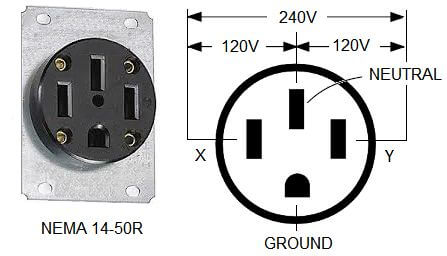
Use power sockets to speed up charging
If a regular outlet does not provide the required charging speed and you need a more efficient option, you should consider using higher power outlets. One such option is a NEMA 14-50 socket, which can provide up to 40 amps of power. In most cases, such an outlet can significantly reduce the charging time of a Tesla.
Power sockets like NEMA 14-50 are used for electric stoves, tumble dryers, or other high-powered appliances, so they are able to provide more current and power to charge an electric vehicle. Using such an outlet, you can charge your Tesla in about 8-10 hours, which is almost three times faster than charging from a regular outlet.
Installing such a socket may require the assistance of a professional electrician, as the installation process involves some changes to your home's electrical system. However, it is an investment that will greatly improve your charging experience and save you time in the future.
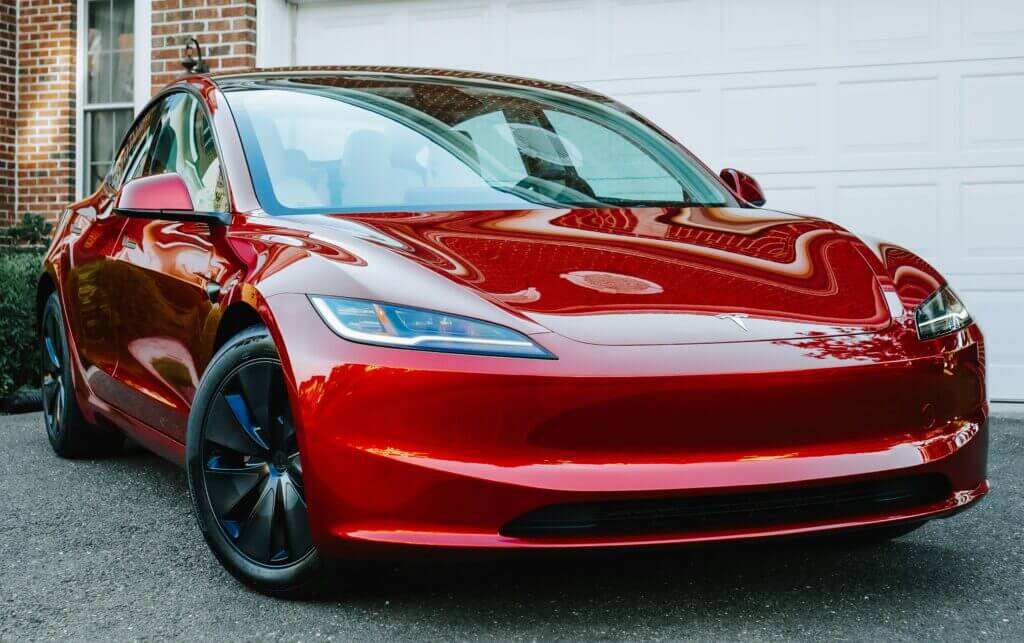
The process of connecting a Tesla to a charger
- Check the cable and socket. Before you connect your Tesla, inspect the charging cable and the outlet for damage or dirt. Make sure the cable is intact and that the outlet is free of water, dust, or foreign objects.
- Plug the cable into a power outlet. First, plug the charging cable into a power outlet. Make sure the outlet is working properly and has a stable power supply. If you are using a power strip or adapter, make sure it is connected correctly.
- Connect the cable to the vehicle. Once the cable is securely connected to a power source, plug it into the car. When you do, you will see the Tesla screen display information about the start of charging. In most cases, you will hear a beep or see an indicator light to indicate a successful connection.
- Check the charging indicators. After connecting, make sure that the car has started charging by checking the indicators on the car screen or on the charger. If the indicator shows that the charging is successful, you can safely leave the car to charge.
This simple algorithm will help you connect your Tesla electric vehicle to the charger correctly and avoid any problems with the charging process.
How do I turn off my Tesla after charging?
An equally important part of the charging process is to properly disconnect the vehicle from the socket when charging is complete. Many users make the mistake of unplugging the cable first from the socket and then from the vehicle, which can lead to sparks or other undesirable effects.
The correct order of disconnection is as follows:
- First, unlock the car to stop the charging process.
- Then disconnect the charging cable from the vehicle.
- Only then can the cable be safely unplugged from the socket.
This simple sequence of steps ensures that the charging process is completed safely and protects both the vehicle and your charging equipment from damage.
Check cables and sockets regularly
Each time you charge, you should inspect the charging cable and socket for damage or signs of overheating. If you notice any cracks, cuts, or dark spots on the socket, this may indicate a problem with the wiring or the charger itself. In this case, do not take any risks - it is better to contact a professional for diagnostics and repair.
Regular inspection of the equipment will help to avoid unpleasant situations and maintain safety when using an electric vehicle.
How do I choose the right charging cable?
If you are using a Tesla, it is also important to make sure that the charging cable you use meets all the requirements for safe and efficient charging. The main cable for home use is the Mobile Connector, which is suitable for regular wall sockets.
However, if you plan to use more powerful charging solutions, such as power sockets or dedicated charging stations, you may need other types of cables or adapters. It is important to check the compatibility of cables and chargers to avoid damage to the vehicle battery or charging system.
How long does it take to charge a Tesla from a regular outlet?
The charging speed from a standard wall outlet depends largely on the power of the outlet and the state of the battery when charging begins. A standard 220 V and 16 A socket can provide about 3.5 kW of power. This means that Tesla will get about 3-5 km of additional mileage per hour of charging.
Charging from a regular wall socket is ideal for those who use their car for short daily journeys, such as around town or to work. If you leave your car on charge overnight, this can be sufficient for most daily needs.
However, if you need to charge your car fully or faster, you should consider alternative charging options. A Tesla Model 3 with a 75 kWh battery capacity will take about 24 hours to charge from a regular outlet. For some, this may be too long, especially if you regularly travel long distances.
What are the alternatives to a home socket?
A regular wall outlet is the basic option for charging a Tesla, but it is not the only option. There are several other options that can be more efficient and faster.

Use of power sockets
One of the most effective options for charging at home is to install a NEMA 14-50 power outlet. This outlet can provide up to 40 amps of power, which will allow you to charge your car several times faster than from a regular outlet. With this type of outlet, you can charge your Tesla in about 8-10 hours instead of 24 hours.
Installing such a socket may require professional assistance from an electrician, as it is a more complex process than simply plugging into a regular outlet. However, in the long run, it can be a convenient solution for those who use their car frequently and want to reduce charging time.
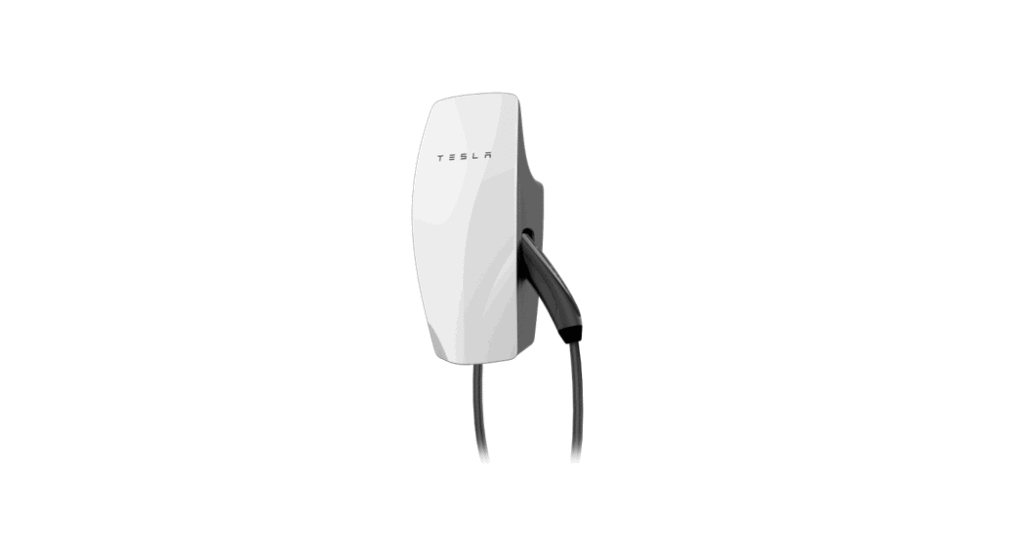
Using the Tesla Wall Connector
Another effective option is the Tesla Wall Connector. This is a special wall charger designed by Tesla for its cars. The Wall Connector supports charging with up to 22 kW of power, making it one of the fastest options for home charging. Using the Wall Connector, you can charge your car much faster than through conventional or even power outlets.
Installing a Tesla Wall Connector requires a professional electrician, and it can also be a rather expensive option. However, it's an investment in charging convenience and speed that can greatly improve your electric vehicle experience.

ECOFACTOR - Reliable solutions for charging electric vehicles
At ECOFACTOR, we focus on the development of charging infrastructure for electric vehicles, contributing to the transition to environmentally friendly transport. Our products include mobile chargers, commercial direct current (DC) and alternating current (AC) charging stations, as well as various accessories for charging electric vehicles. All our devices are manufactured in Ukraine, which guarantees their compliance with European quality standards and reliability in the field.
Our charging stations
- Mobile chargers: These solutions are suitable for electric vehicle owners who need portable charging on the go or at home.
- Stationary charging stations: Designed for private or commercial use. They allow charging electric vehicles with high efficiency, supporting different power levels.
- Software (SaaS): We also offer SaaS solutions for charging station management, enabling businesses to monetise charging infrastructure and provide convenience to customers.
The advantages of ECOFACTOR
- High quality and reliability of products developed and manufactured in Ukraine.
- The ability to choose between mobile and stationary stations for any need.
- Customer support with warranty and post-warranty service.
Our goal is to create solutions that promote environmentally friendly transport and help electric vehicle users enjoy maximum comfort during charging.
Safety when charging your Tesla at home
Safety is one of the most important aspects when charging an electric vehicle at home. Although charging a Tesla is a fairly safe process, there are a few important things to consider:
- Grounding. As already mentioned, make sure that your wall outlet is earthed. Not only will this reduce the risk of electrical shocks, but it will also ensure that the charger works reliably.
- Condition of the cables. Before each charge, check the cable for damage or other defects. If you notice any cuts, cracks, or other damage, replace the cable immediately or contact a specialist.
- Correct connection. Connect the charging cable to the vehicle first, and then to the power outlet. This will avoid sparks or other problems when connecting to the mains.
- Correct disconnection. When charging is complete, be sure to follow the reverse order: first disconnect the cable from the socket and then from the vehicle.
- Humidity and water. Always make sure that the outlet and cables are kept dry. Water or moisture can cause short circuits or other serious problems.
Conclusion.
Charging your Tesla Model 3 from a home outlet in Ukraine is a very realistic and convenient way to keep your electric car ready to go. Although charging via a standard outlet takes longer, it is still a practical option for those who are not in a hurry and can leave their car charging overnight. If you need faster charging, you should consider installing a power outlet or a special charging station. The main thing is to follow the safety rules, and then the charging process will be simple and carefree.
FAQ
1. Can I charge Tesla Model 3 from a regular 220 V outlet?
Yes, you can charge Tesla Model 3 from a regular 220V outlet. However, it is worth remembering that such charging is quite slow and can take about 24 hours to fully charge the car.
2. Is it possible to speed up Tesla charging at home?
For example, you can speed up charging by installing a power outlet such as a NEMA 14-50 outlet, which provides up to 40 amps and can charge your car up to three times faster. You can also install a dedicated charging station, such as wall chargers.
3. What is the Mobile Connector and what is it for?
The Mobile Connector is the basic charging cable that comes with your Tesla. It allows you to charge your car from a regular wall outlet or through adapters for other types of outlets.
4. Do I need a ground connection to charge my Tesla at home?
Yes, a ground connection is essential for safe charging. It helps to avoid the build-up of static electricity, which can lead to electric shocks.
5. Can I charge my Tesla at night?
Yes, many owners leave their cars overnight to charge. This is a convenient option, as the car will be fully charged by morning.
6. Is it safe to charge a Tesla from a home outlet?
Charging a Tesla from a home outlet is safe if you follow the rules: check the condition of the outlet, the presence of grounding, do not overload the electrical network, and use certified charging cables.
7. Can I use a power outlet to charge my Tesla?
Yes, power sockets such as NEMA 14-50 are a great solution for faster charging at home. They allow you to charge your car much faster than with a conventional outlet.



